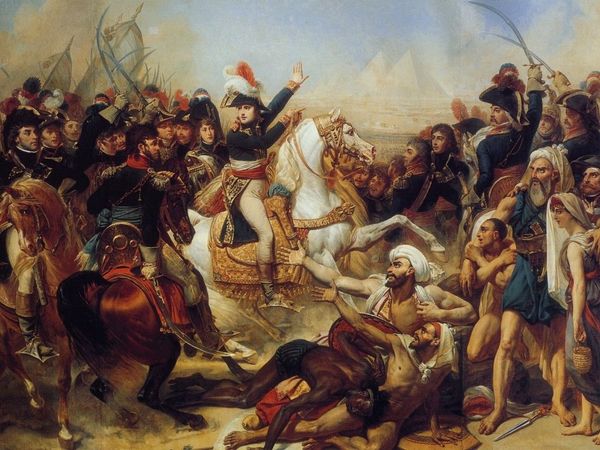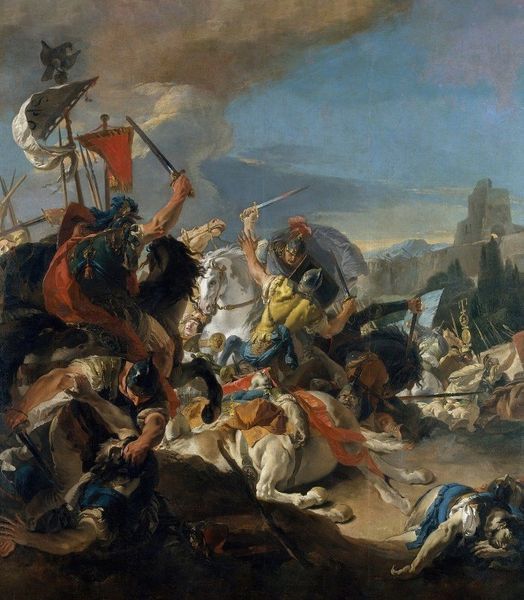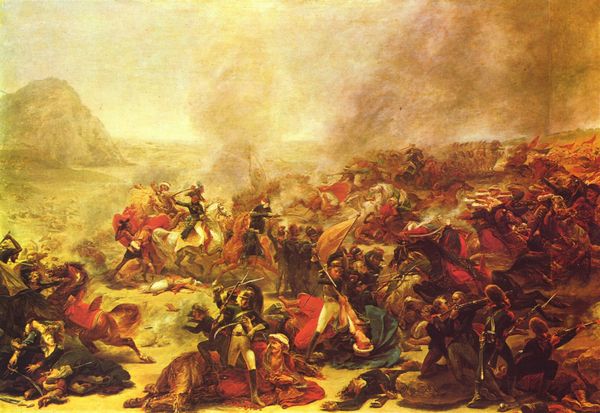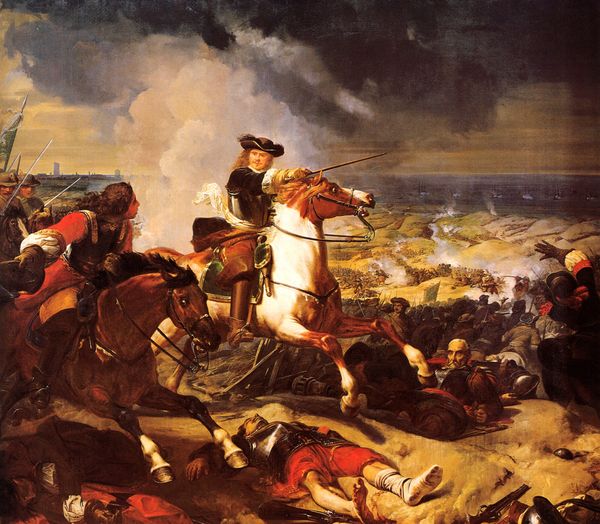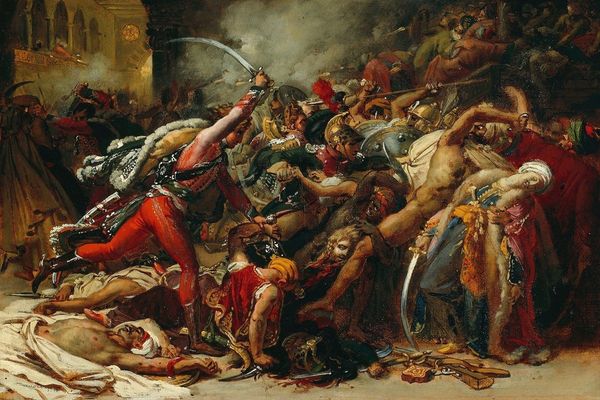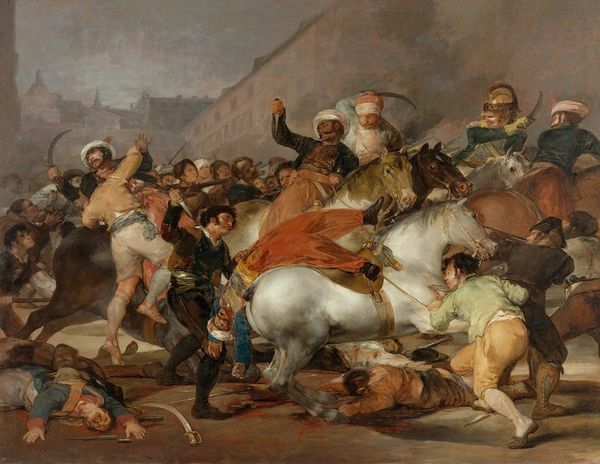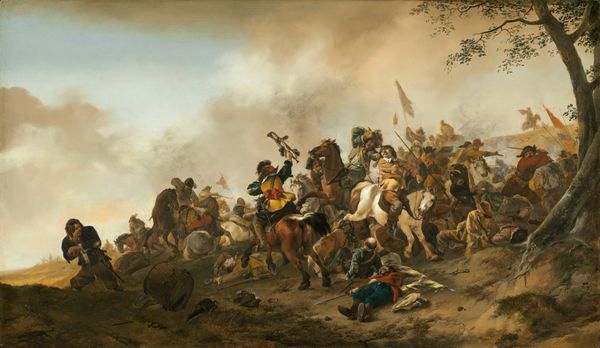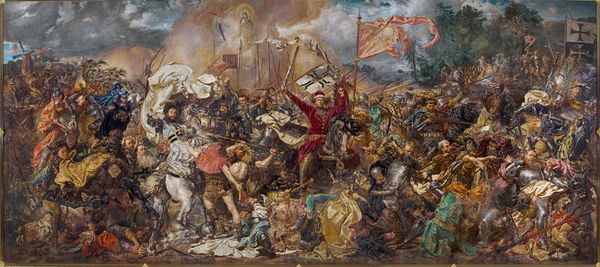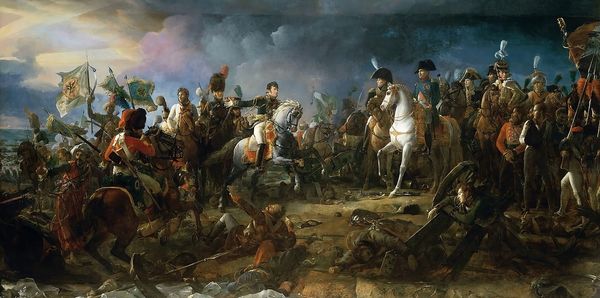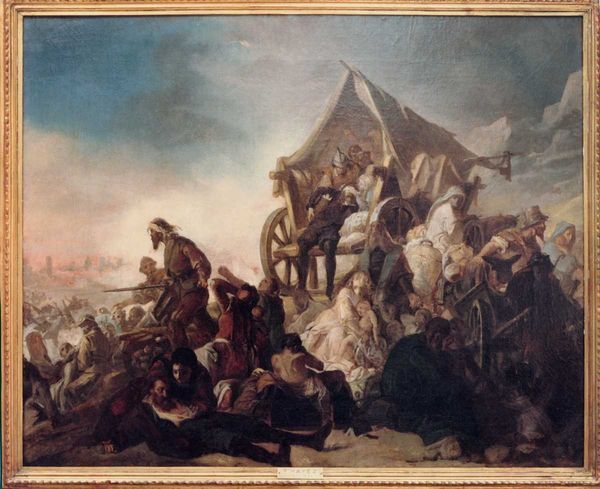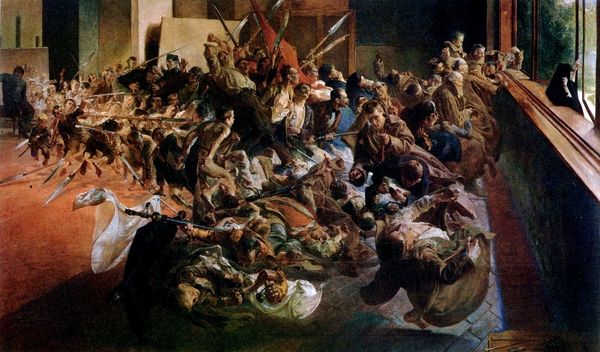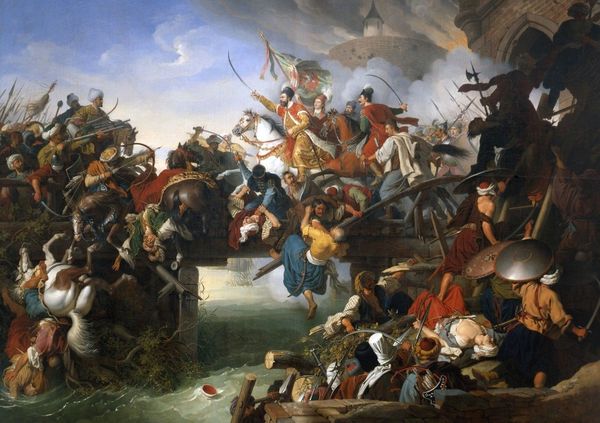
Battle of Aboukir, July 25, 1799 1806
0:00
0:00
antoinejeangros
Château de Versailles, Versailles, France
Copyright: Public domain
Curator: Well, immediately I'm struck by how much violence is teeming just under the surface here. What looks like a fairly standard depiction of Napoleon quickly devolves into almost unbearable chaos. Editor: That's certainly part of its power. You're looking at "The Battle of Aboukir, July 25, 1799", painted by Antoine-Jean Gros in 1806. Gros, a student of David, was documenting Napoleon’s campaigns. But it is his handling of war as spectacle, myth, and horror that makes his painting memorable. Curator: Spectacle, yes. See how Bonaparte is mounted on that magnificent white steed, so clean and poised amidst the carnage. He’s almost like a figure of destiny riding through time itself. But all those writhing, contorted bodies...It makes the moment far more troubling, far more psychologically potent, than the straightforward heroism we expect. Editor: Exactly! While seemingly Neoclassical with its heroic scale, it departs significantly from the stoic classicism one might expect from a student of David. Notice how Gros employs Baroque techniques like dramatic chiaroscuro to amplify the emotional intensity and even a Romantic focus on raw feeling. Curator: It’s quite a brew. Even the symbolic charge is complicated. For instance, the Turkish combatants, though clearly defeated, are not demeaned. There’s a stark humanity in their poses of anguish and surrender. The architecture of Aboukir fort is visible in the background – but barely registers against the violence in the foreground. Editor: True, and look closely. He wasn't merely interested in depicting martial valor or victory. Gros delves into the human cost, revealing war’s inherent savagery. Each figure carries symbolic weight. This makes it less an illustration of glory and more an exploration of what it actually means. The image offers a nuanced commentary on Napoleon’s campaign in Egypt, as an adventure both epic and ruinous. Curator: Which helps to understand why Gros remains such a relevant artist, and why this painting never truly settles or allows its audience to turn away easily. It feels surprisingly contemporary in its ambivalent assessment. Editor: Absolutely. It pushes past pure glorification of conflict and starts to nudge us towards deeper questions about legacy and its price. That makes Gros an artist very much for our times, doesn’t it?
Comments
No comments
Be the first to comment and join the conversation on the ultimate creative platform.
